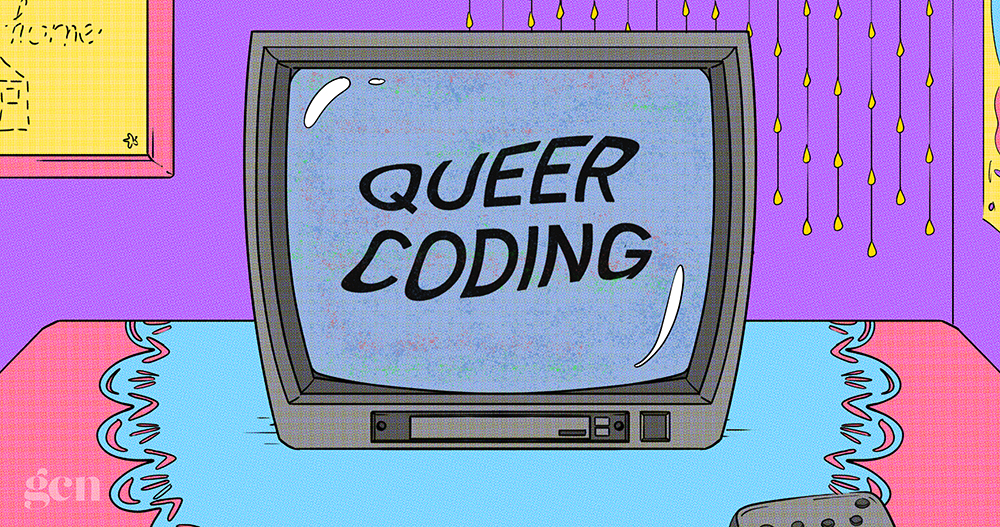GCNnewvoices in partnership with BeLonG To will platform the opinions and thoughts of LGBTQ+ young writers from across the country, speaking about issues that matter to them. Niamh Kelly talks about queer coding and LGBTQ+ representation in culture.
Some people believe that positive LGBTQ+ representation wasn’t popular on screens until the 1990’s, when shows such as Will & Grace, Buffy the Vampire Slayer and Xena could portray outwardly queer characters to a mainstream audience. However, LGBTQ+ themes in film date back to the beginning of the 20th century, with films such as A Florida Enchantment (1914), Different from the Others (1919), Morocco (1930) and Queen Christina (1933).
In the 1930’s, the US Supreme Court and the public fell into a moral panic surrounding the influence ‘indecent’ or ‘immoral’ films could have on society. This panic led to the introduction of the Motion Picture Production Code, or the Hays Code; a national censorship board barring the depiction of any form of ‘sexual perversion’ or ‘deviance’ in films. This censorship may have had a profound effect on all forms of minority representation, but it definitely didn’t stop them.
Many writers and directors began giving characters certain traits and mannerisms that would imply that they were queer, without outwardly stating it. This ambiguity was enough to get around the Hays Code and many conservative audiences, while still providing representation to those who were actively searching for it. This practice, known as queer coding, was widely used for the rest of the 20th century.
Queer narratives began appearing in the subtext of films. Two notable Disney shorts, Ferdinand the Bull (1938) and The Reluctant Dragon (1941), show effeminate main characters who are expected to fit into more masculine roles. In both The Wizard of Oz (1939) and Alice in Wonderland (1951), an under-appreciated girl is whisked away to a fabulous world full of colour and spectacle, where her new friends seem to value and understand her more than her biological family. The Ugly Duckling (1939) is a prime example of the narrative of an outcast, who must find acceptance and happiness by embracing the aspects of themselves that were considered different.
Even after the Hays Code was lifted in 1968, queer coding played a major part in cinema, but not always in a positive way. To this day, one of the quickest ways films mark a character as a villain is to land them with a number of homosexual stereotypes. In Disney films alone, villains such as Cruella De Vil, Maleficent and Ursula were styled after drag queens, while Scar, Captain Hook and Honest John all carry characteristics often associated with gay men.

Despite this, however, queer coding can still be a positive tool used to portray queer narratives. If used correctly, it can provide representation without making a character’s gender or sexuality the centre of their story. Television shows such as Steven Universe and Adventure Time give us queer relationships that feel natural and normalised, by allowing them to develop in the background.
Ultimately, queer coding characters have given us representation where there otherwise would have been none. It has allowed LGBTQ+ voices to infiltrate a heteronormative industry and has brought us some of the biggest heroes and villains in cinematic history.
Keep up to date with #GCNnewvoices across all our social media.
© 2020 GCN (Gay Community News). All rights reserved.
Support GCN
GCN is a free, vital resource for Ireland’s LGBTQ+ community since 1988.
GCN is a trading name of National LGBT Federation CLG, a registered charity - Charity Number: 20034580.
GCN relies on the generous support of the community and allies to sustain the crucial work that we do. Producing GCN is costly, and, in an industry which has been hugely impacted by rising costs, we need your support to help sustain and grow this vital resource.
Supporting GCN for as little as €1.99 per month will help us continue our work as Ireland’s free, independent LGBTQ+ media.

comments. Please sign in to comment.